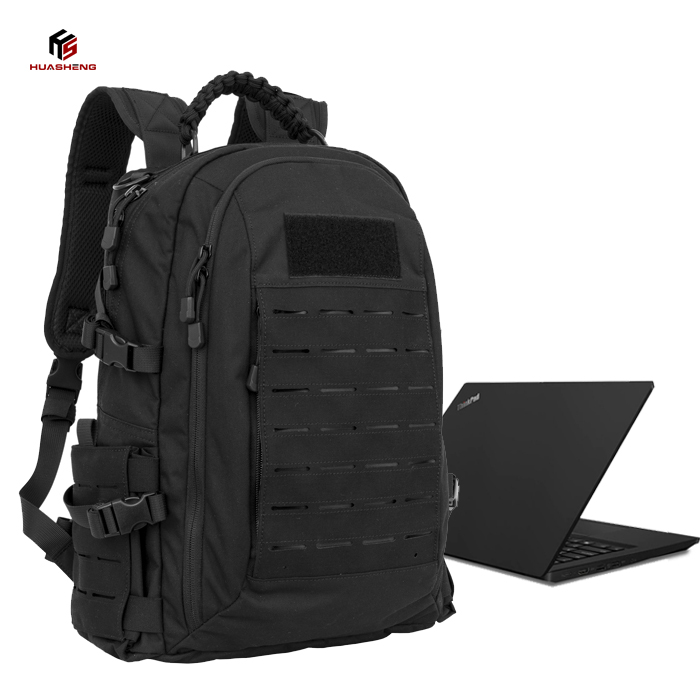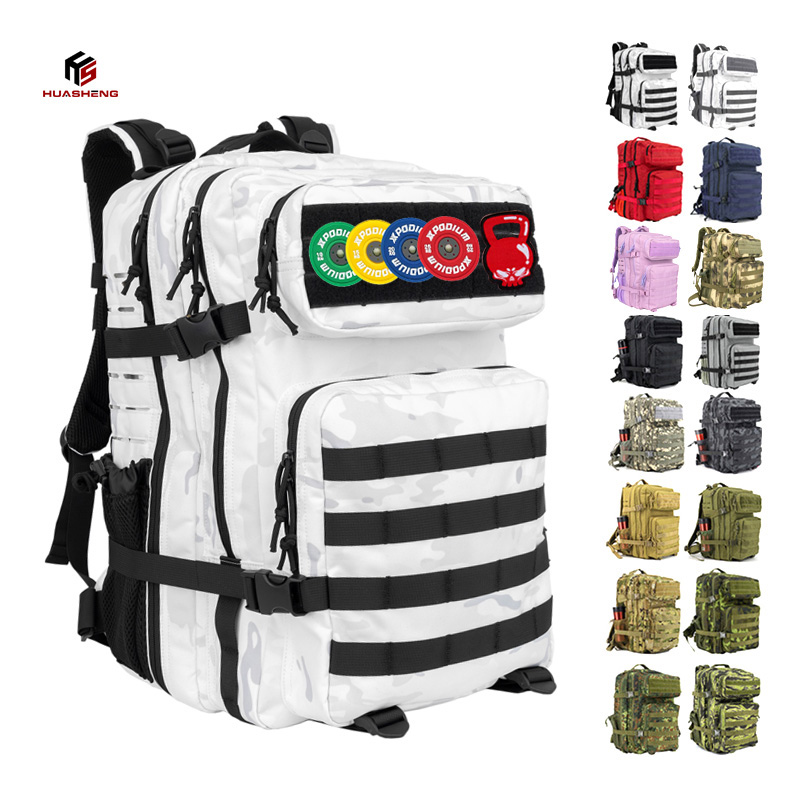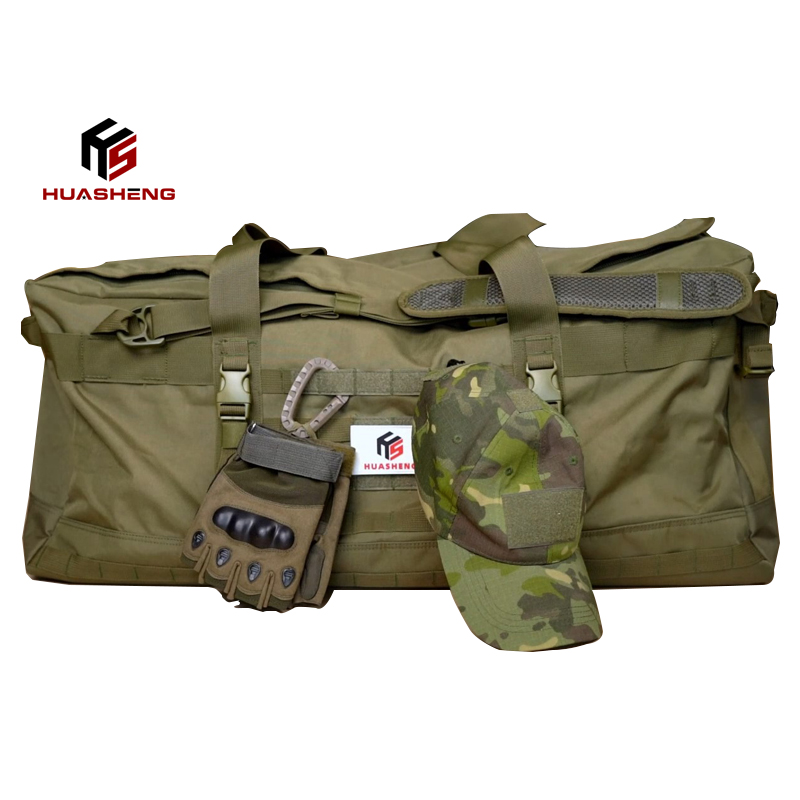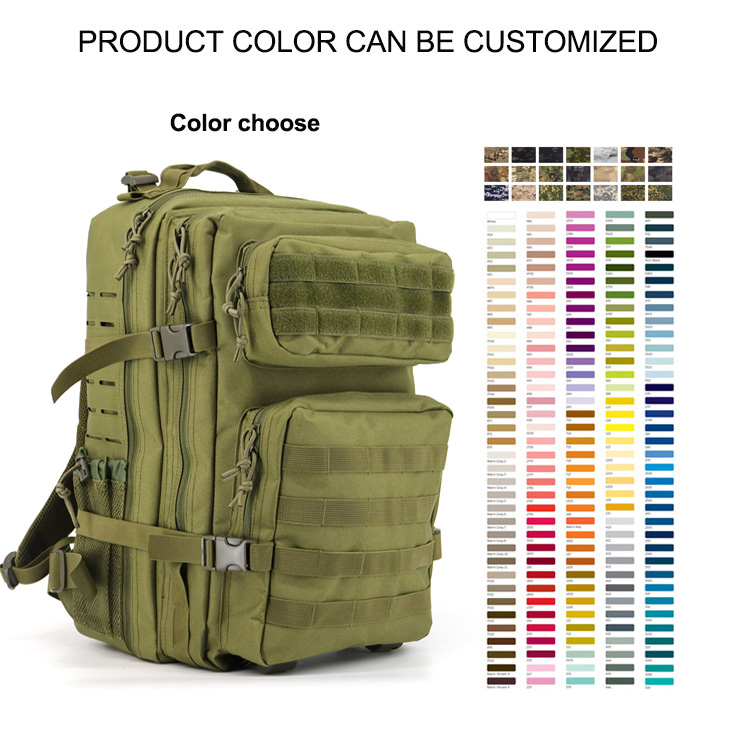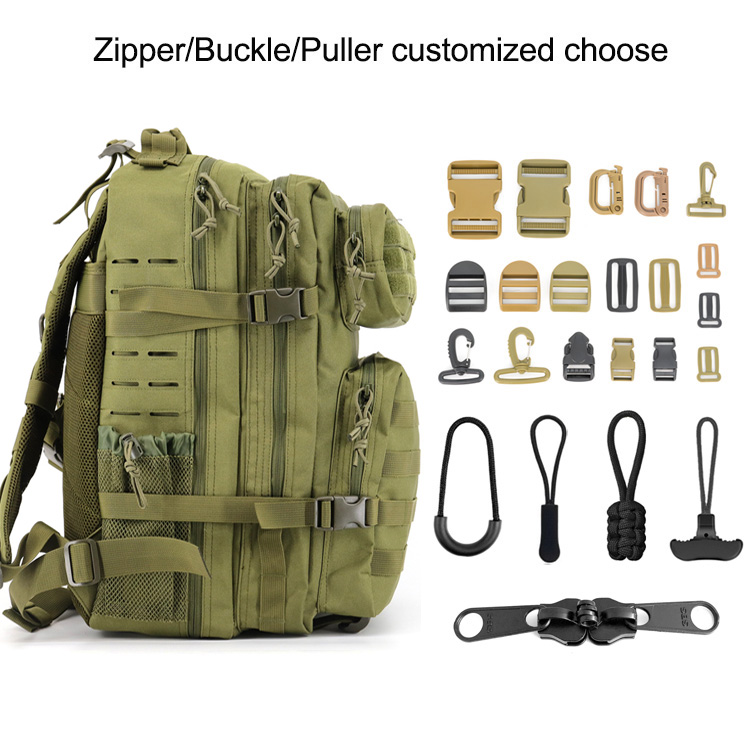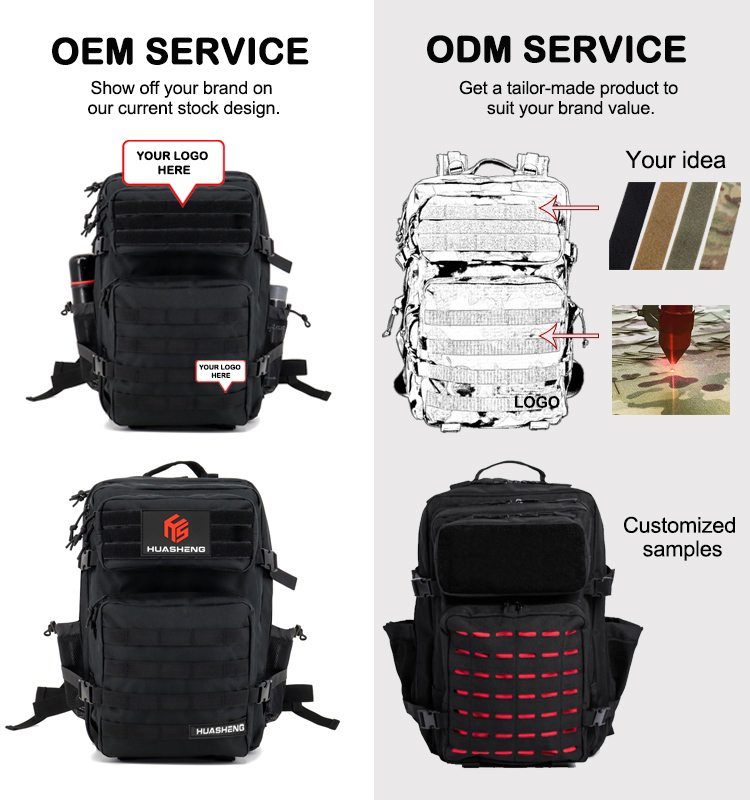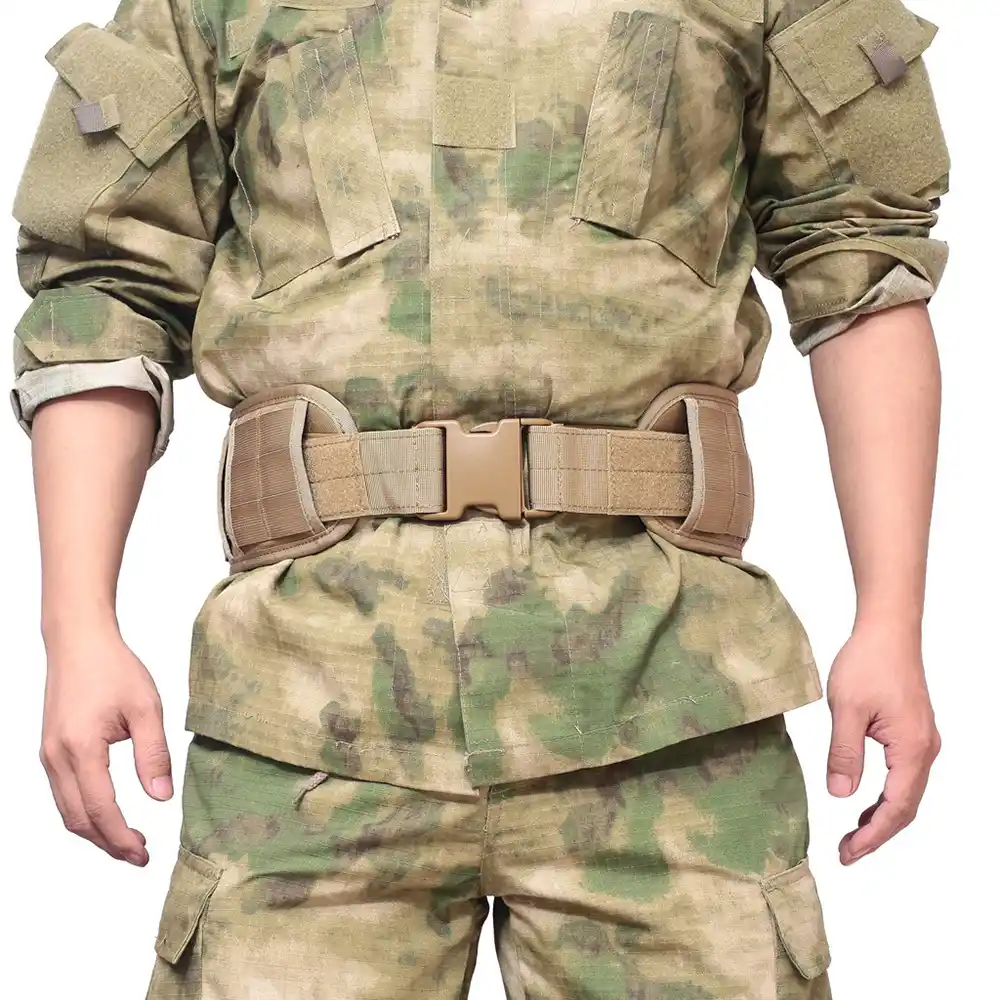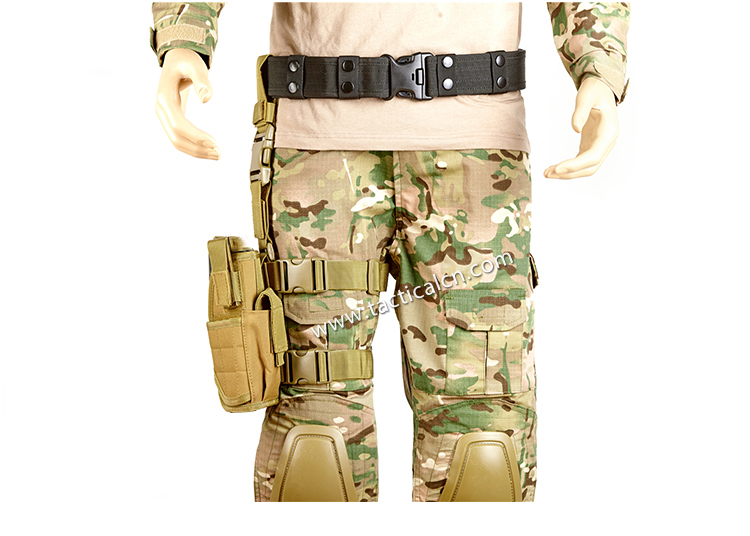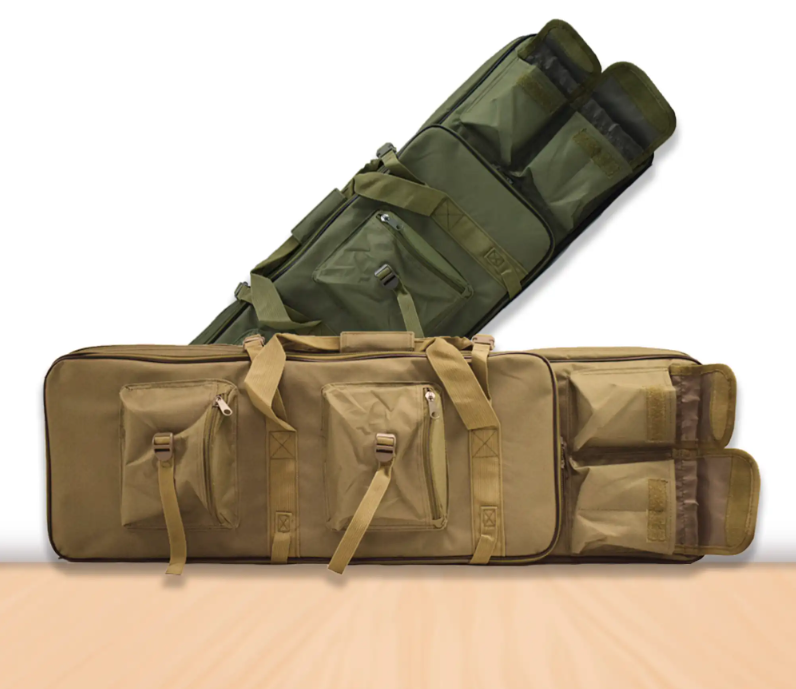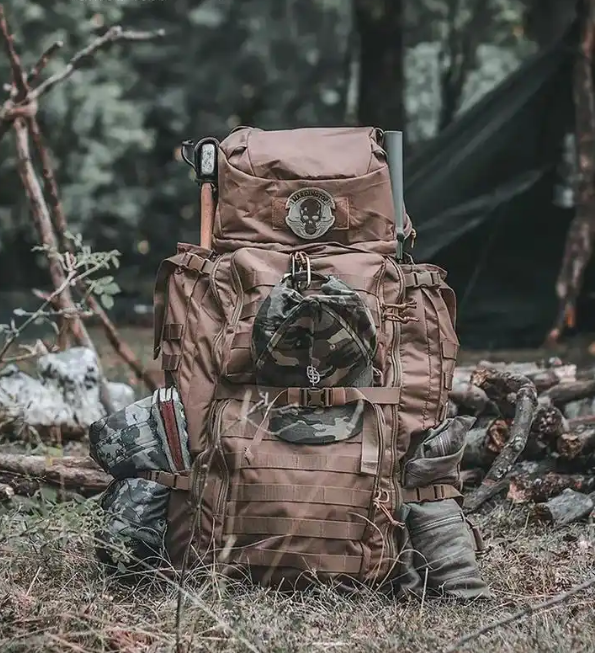Before designing a custom tactical backpack, it is crucial to confirm your design ideas. This step not only helps you sort out your ideas, but also lays the foundation for subsequent material selection, supplier evaluation, proofing and production. Below, we will delve into several key aspects to focus on when confirming your design ideas.
Clarify design requirements
1. Sort out your design goals
Before starting to design, you should first ask yourself a few questions to ensure that your design direction is clear:
—What is the main purpose of the backpack?
Determining the purpose of the backpack is the first step in the design. Different uses will determine the functional characteristics and design direction of the backpack. For example:
–Outdoor adventure: If it is used for activities such as hiking and camping, the backpack needs to have waterproof and tear-resistant properties, as well as good load-bearing capacity.
–Urban travel: For daily commuting or urban exploration, the backpack needs to be more fashionable and convenient for carrying personal items such as computers, documents, etc.
–Military training: In this case, the backpack needs to be more durable and have multi-functional modules to facilitate carrying equipment and supplies.
—Who is the target user?
Understanding your target user is the key to successful design. This includes:
–User’s occupation and activity type: For example, military personnel, outdoor sports enthusiasts, travelers, etc.
–User preferences and habits: What style of backpack do they like? What special requirements for color and function? For example, military personnel may prefer camouflage design, while outdoor enthusiasts may prefer bright colors to improve visibility.
—What functions do you want to achieve?
According to different usage scenarios, consider the specific functions that the backpack needs to have, including:
–Waterproof and breathable: For outdoor adventurers, waterproof materials and breathable design are very important.
–Modular design: If it is a military backpack, it may need to carry other accessories, and modular design can increase flexibility.
–Safety: Designs such as safety pockets and reflective strips can improve safety in use.
2. Determine the appearance design of the backpack
Once the purpose and function of the backpack are clear, the next step is the appearance design. Consider the following aspects:
—Color and style
The color and style of the backpack are closely related to its purpose. Reasonable design can not only enhance the beauty of the backpack, but also improve its practicality.
Color selection:
–Classic colors:
Classic colors such as camouflage, black, and gray are particularly common in military backpacks. They are concealed and low-key, and are suitable for use in field environments.
–Bright color selection:
For outdoor adventurers, you can choose bright colors such as orange, red, or fluorescent green. These colors not only increase visibility, but also improve safety, especially in foggy or dark environments.
–Sports style:
If the backpack is mainly used for sports, consider using vibrant color combinations, such as bright blue and bright yellow. This design can attract the attention of young athletes and convey a positive sports atmosphere.
Style design:
–Simple style:
Modern and simple design emphasizes the simplicity of lines and the practicality of functions, suitable for urban commuting and leisure activities. Clean tailoring and simple decoration can make the backpack look more fashionable and high-end.
–Outdoor style:
Outdoor-style backpacks usually emphasize durability and practicality. The design can add functional elements such as multiple pockets, zippers, and fasteners to adapt to complex outdoor environments. For example, use large-capacity side pockets and front pockets for quick access to equipment.
–Sports style:
Backpacks with sports style are usually designed with comfort and breathability in mind, using curved design and ergonomic structure to provide a better fit. Breathable mesh can be used on the shoulder straps and back area of the backpack to ensure comfort when carrying for a long time. In addition, sports style backpacks can also add reflective strips to enhance safety at night.
Patterns and printing:
–Personalized patterns:
Consider adding personalized patterns or brand logos to the backpack to give it a unique personality in addition to functionality. For young consumers, pattern design can be trendy elements, such as geometric patterns, animal prints, etc., which can better attract their attention.
–Functional printing:
Designing functional printing on the outside of the backpack, such as SOS logos, maps, etc., can enhance the practicality of the backpack, especially in outdoor adventures, which can help users quickly find the information they need.
Combination of materials and colors:
–Matching colors and materials:
Choose colors that match the material of the backpack. For example, when using high-strength nylon, you can choose dark tones that echo its wear-resistant properties, while when using Oxford cloth, you can boldly try brighter colors.
–Surface treatment:
Choosing a glossy or matte surface treatment can affect the overall visual effect and style of the backpack. Glossy materials give a modern look, while matte materials appear more low-key and suitable for military and outdoor use.
Shape and structure
The shape of the backpack affects its function and comfort. Designing a curved backpack that is balanced on the back can effectively disperse the weight and reduce the burden. At the same time, the internal structure should be arranged reasonably to ensure that the items are easy to classify and access. Considering the user’s usage habits, multiple compartments and pockets can be designed to improve practicality.
Detailed design
Small details often enhance the overall effect of the backpack, such as:
–Zipper and fastener selection: Use high-quality zippers and fasteners to ensure durability and smoothness.
–Strap design: The width and material of the strap should consider comfort and breathability, especially when carrying for a long time.
–Additional functions: Detailed design such as water bag port and charging port can further enhance the practicality of the backpack.
3. Material selection
The choice of material is crucial to the performance and durability of tactical backpacks. Here are some common materials and their characteristics:
—High-strength nylon (such as 500D, 1000D):
This material has excellent abrasion and tear resistance and can withstand heavy loads. 500D nylon is suitable for small backpacks, while 1000D nylon is suitable for large backpacks and provides greater durability.
—Oxford cloth:
Oxford cloth is a lightweight, wear-resistant material that is usually used in backpacks with medium loads. It has good waterproof performance and is suitable for urban travel and short outdoor activities.
—Canvas:
Canvas is thick and durable, with good waterproof performance and tear resistance. It is suitable for large backpacks, especially for better protection when hiking long distances.
—Ripstop Nylon:
This material uses a lattice structure to increase abrasion and tear resistance, which is very suitable for high-intensity outdoor activities.
—Composite materials:
Some high-end backpacks may use specially treated composite materials, which are generally more waterproof and durable and suitable for use in extreme conditions.
—Foam and breathable mesh: These materials are often used for straps and back padding, providing comfort and breathability for long-term use.
Summary
Confirming the design idea is the first step in the process of customizing a tactical backpack, and it must be taken seriously. By clarifying the design goals, understanding the needs of the target users, determining the appearance design of the backpack, and choosing the right materials, you will lay a good foundation for subsequent material selection, supplier evaluation, and product production. A successful design must not only meet functional requirements, but also be attractive and practical.
On this basis, the next step is how to choose the right supplier to put your design ideas into practice. Stay tuned!

